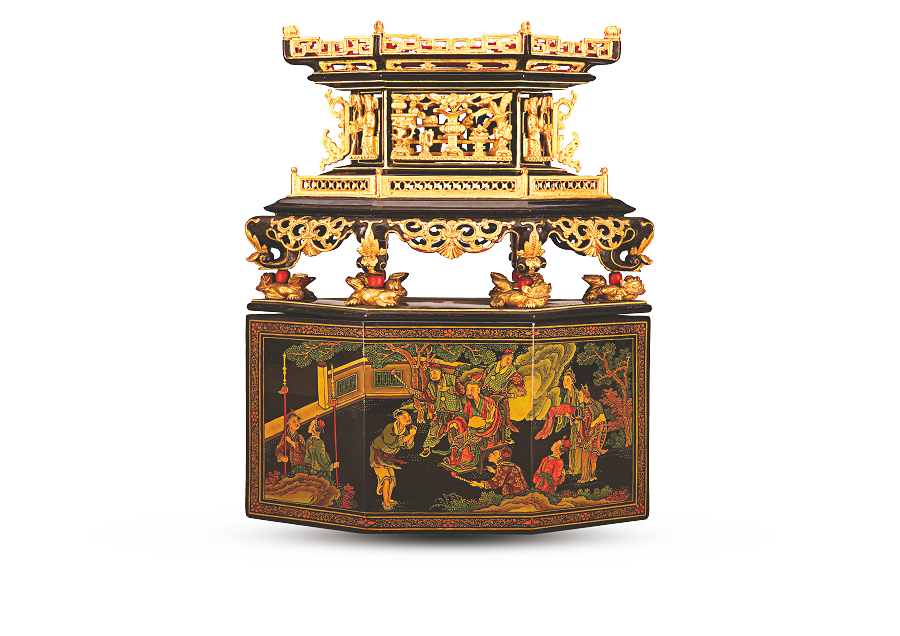

Editor's note: Traditional arts and crafts are supreme examples of Chinese cultural heritage. China Daily is publishing this series to show how master artisans are using dedication and innovation to inject new life into heritage. In this installment, we explore the long-lasting luster of lacquer.
Related: Lacquer art: Tears of nature, timeless beauty
Art form utilizes nature's resilient sap and evolves with the accumulation of time, patience and artistry, Lin Qi reports.
At first, it appears to just be a piece of decayed wood. No one would bother giving it a second glimpse. Not unless one is told that this object, standing no more than 6 centimeters with some red stains, is of great historical significance. Belonging to the Neolithic period, it suggests that people living along the Yangtze River between 6 and 7 millennia ago had sourced sap from lacquer trees and used it to facilitate their daily lives.
This wooden piece, later identified as a bowl coated with a thin layer of lacquer, was excavated from the relic site of Hemudu Culture in Yuyao, Zhejiang province, in 1977. The Neolithic culture once thrived along the Yangtze's lower reaches and, according to archaeological findings, has produced jade objects, lacquerware and other relics.
When the people of Hemudu applied lacquer to the bowl, it is believed that they also mixed the varnish with vermilion to beautify the piece, explaining the red stains.
The bowl is now part of a collection at the Zhejiang Provincial Museum in the provincial capital of Hangzhou.